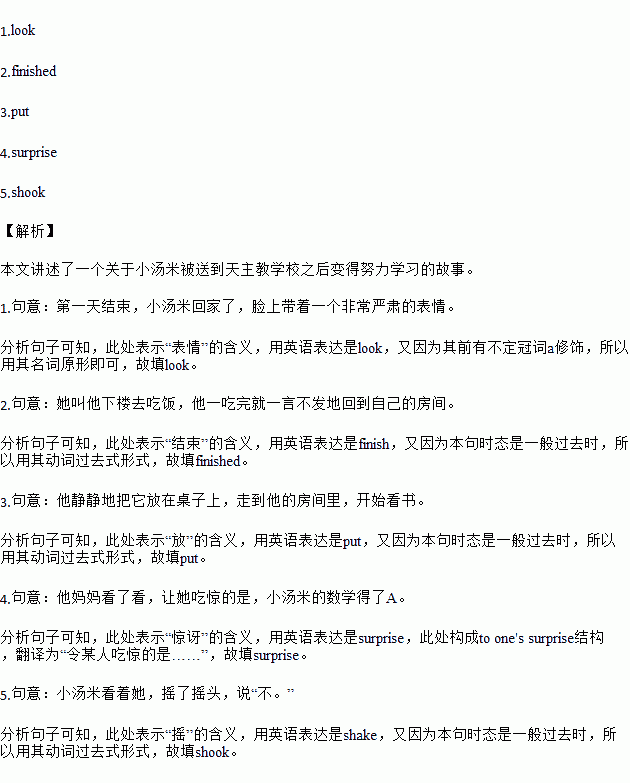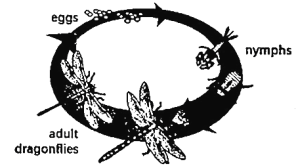题目内容
Fill in the blanks according to the given letters.
Little Tommy was doing very badly in math. His parents had tried everything—tutors(家教), special learning centers--in short, everything they could think of. Finally, they took Tommy to a Catholic (天主教的) school.
After the first day, little Tommy came home with a very serious l1. on his face. He didn’t kiss his mother hello. Instead, he went straight to his room and started studying. Books and papers were spread out all over the room and little Tommy was hard at work. His mother was surprised. She called him down to dinner and as soon as he f2. eating, he went back to his room, without a word. In no time he was back hitting the books as hard as before. This went on for some time, day after day while the mother tried to understand what was happening.
Finally, little Tommy brought home his report card. He quietly p3. it on the table and went up to his room and hit the books. His mom looked at it and to her s4., little Tommy got an A in math. She could no longer hold her curiosity. She went to his room and asked, “Son, what was it? Was it the nuns (修女)?”
Little Tommy looked at her and s5. his head, “No.”
“Well then,” she asked again. “What was it?”
Little Tommy looked at her and said, “Well, on the first day of school, when I saw that man nailed (将…钉牢) to the plus sign, I knew they weren’t joking.”
 新课标阶梯阅读训练系列答案
新课标阶梯阅读训练系列答案People often need to take some medicine when they catch a cold or a cough. Now here are the constructions on how to take medicine and store it.
Cold medicine-tablet(药片) Adults: One tablet a time. Take two tablets in 24 hour. 12-18 years of age: One tablet. Take only one tablet in 24 hours. Store at 200c-250c. Take the medicine 60 minutes before eating food. |
Cold medicine-syrup(糖浆) 2-4 years of age: 4 ml (0. 8 teaspoon) a time 5-6 years of age: 5 ml (1 teaspoon) a time 7-12 years of age 7. 5 ml (1 and 1/2 teaspoons) a time Adults: 10 ml (2 teaspoons) a time Don't take it more than three times in 24 hours. Kid under 2 years old can't take it. |
Enclose(附): Honey(蜂蜜)can help you stop colds and coughs, too. Kids between 2 and 5 years old should take 1/2 teaspoon of honey 30 minutes before going to bed. A full teaspoon for kids between 6 and 11 years old, and two teaspoons for kids from 12 to 18 years old. Just remember NO HONEY FOR KIDS UNDER TWO YEARS OLD. |
1.How often should an adult take the tablet?
A.Once a day. B.Twice a day. C.Three times a day. D.Four times a day.
2.When kids are _________ , they can't take the syrup.
A.18 months old B.36 months old C.6 years old D.18 years old
3.John is twelve years old, and he should take _________ once.
A.one tablet or 5 ml of syrup B.two tablets or 5 ml of syrup
C.one tablet or 7.5 ml of syrup D.two tablets or 7. 5 ml of syrup
4.How much honey should a seven-year-old boy take?
A.0. 5 teaspoon. B.0.8 teaspoon. C.1 teaspoon. D.2 teaspoons.
5.When you have _________ you can take the medicine mentioned in the passage.
A.a stomachache B.a backache C.. a toothache D.a cold


